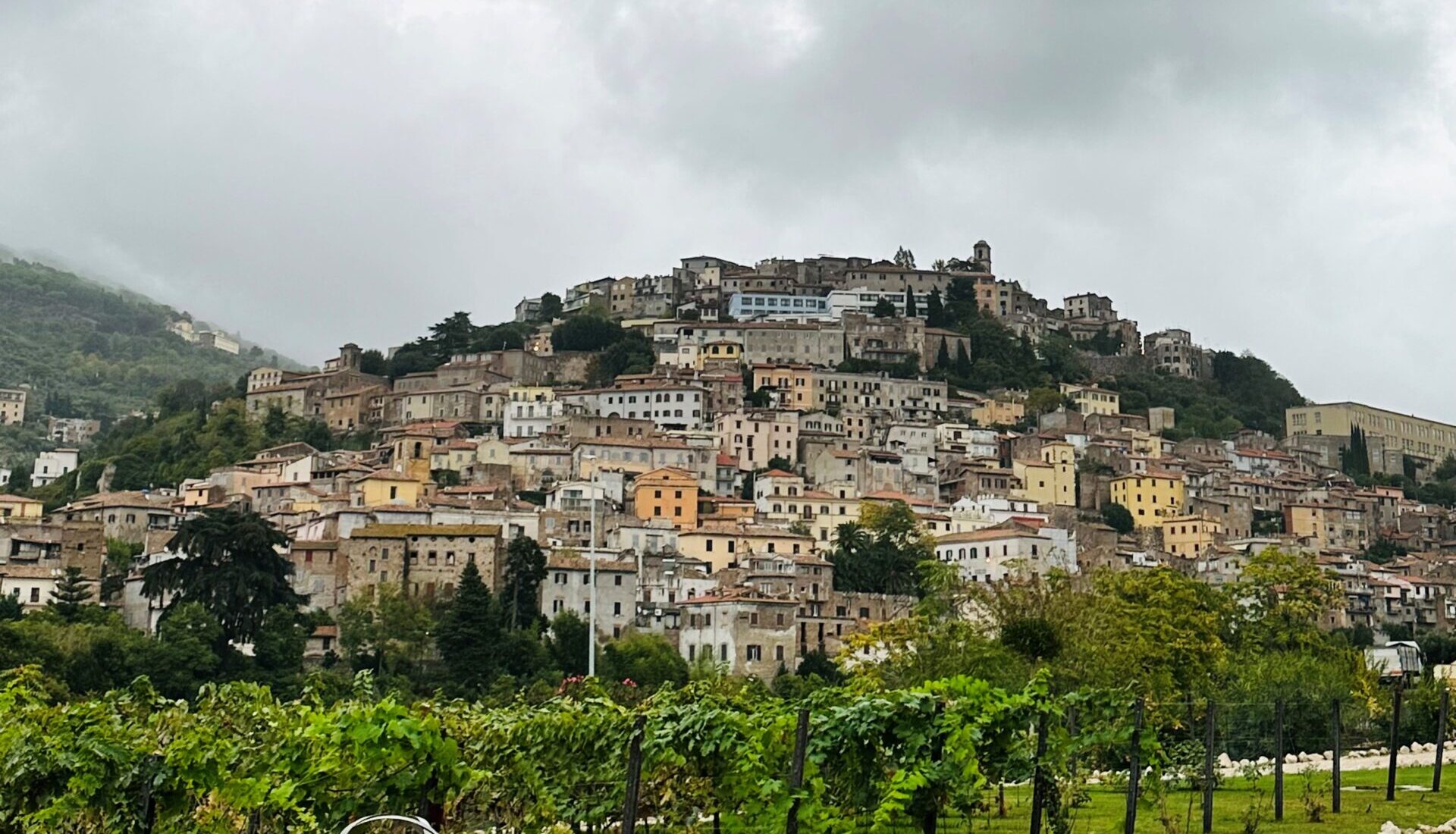Napa Valley Life Magazine
Romans sometimes call their city Caput Mundi—the capital of the world in Latin. And for centuries, it was just that. Romans famously moved, traveled, and conquered lands across the mundi, but there was nowhere more Roman outside the city than the Roman countryside. It is a pity that more visitors do not travel past metropolitan Rome to see it, but it is understandable when there is so much to see and do in Rome and so little is known about its surroundings.
Rome’s winemaking past, going back to at least the Empire, is such a part of its history that to symbolize the fact, Parco Archeologico del Colosseo partnered with Cincinnato Winery to plant a small vineyard of Lazio’s native Bellone on Palatine Hill, in the same spot where Emperors Augustus, Nero, and Tiberius built their palaces and temples.
Setbacks to Lazio’s wine industry occurred during and after WWII when vineyards were destroyed, abandoned, or used for mass production. The region is slowly gaining recognition for its wine again, particularly its ancient grape varieties grown in rare microclimates that only the Romans knew about until recently.
The Castelli Romani area is about ten miles southeast of Rome. The Lazio Volcano created this area hundreds of thousands of years ago and left beautiful “crater lakes” Albano and Nemi. Southern Lazio’s volcano-to-the-sea area begins at the Castelli Romani and extends to the adjacent Latina region that hugs the coastline from Nettuno to Gaeta. Here, Lazio producers are experimenting with rare and little-used native varieties, and this, coupled with the volcano-to-sea terroir, is elevating the region to a new echelon.
Although there are excellent, larger producers here, much of the local production is limited or not distributed outside Europe. Visitors will find generational wineries, vineyards tended by grandfathers, and grandchildren learning how to run a business from the roots to the shelves. There’s palpable energy, commitment, and sweet, cautious pride surging from volcano to sea.
CASTELLI ROMANI
The sixteen towns of the Castelli Romani are where popes and aristocrats spent their summers, and where beautiful lakes were once volcanic craters. Giovanna Trisorio of Cincinnato Winery, explained, “Southern Lazio has a diverse landscape of hills, lakes, coastline, and remnants of its volcanic past—all of which create ideal conditions for producing excellent wine.”
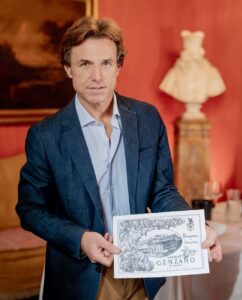
Jacobini, Genzano di Roma
Count Alessandro Carafa Jacobini and his wife, Countess Nina Farrell, have revived the label Jacobini after it halted production years ago. They have centuries of history to guide them on their venture, as evidenced by the family’s 17th-century Palazzo Jacobini in Genzano di Roma. Jacobini hosts tastings inside the palazzo, which gives an intimate glimpse into the life of an Italian aristocrat, complete with busts and portraits of their ancestors, including a Cardinal.
The Jacobini label was highly successful pre-WWII, but afterward, the family was forced to regroup and form a cooperative instead. Alessandro and Nina restarted production of Jacobini wine with the local variety Trebbiano Toscano (Procanico) and released two vintages: 2021 and 2022. The wines have the beautiful minerality one would expect from the terrain’s volcanic soil. Try the 2022 Jacobini Bianco.
Visit Genzano di Roma. Each June, the city of Genzano di Roma throws the festa “Infiorata” (decorated with flowers). As the name implies, the city is covered with flowers, and some streets are covered as well.
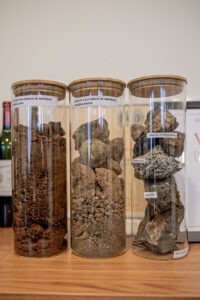
Ômina Romana, Velletri
Velletri, where Ômina Romana winery is located, is on the southern border of Castelli Romani. Their story is unique to the area: German-born Anton Börner and his Italian wife, Anna Maria, visited the Lazio area, fell in love with its wine, and commissioned a soil study on an available piece of land. Anton discovered that the mineral-laden volcanic soil would make for exquisite wine, bought the property, and built the winery Ômina Romana from the ground up. Latin for good Roman omens, Ômina Romana gives a nod to the gods with its fanciful wine names like Janus Geminus and Diana Nemorensis.
Börner’s level of detailed analysis continues today through his CPA-trained daughter Katharina, CEO of the winery. With Katharina’s oversight, the winery runs like a well-oiled machine—utilizing the winery’s philosophy of “mens et manus”—mind and hand. It works: Ômina Romana has won multiple wine awards in less than ten years, including Tre Bicchieri. Try the Tre Bicchieri award-winning 2021 Hermes Diactoros Bianco.
Dine at the Capodiferro Restaurant overlooking the breathtaking Lake Nemi.
LATINA
Cincinnato Winery, Cori
Cori is the epitome of picturesque, with its pastel homes and buildings blanketing the hill from top to bottom, and the renowned Cincinnato Winery sits at its base. The name Cincinnato honors the Roman senator and farmer Cincinnatus, who retired to Cori 2000 years ago.
Cincinnato is a cooperative of 100+ farmers growing indigenous grapes like Bellone, Cesanese, and Nero Buono. There was a time when these grapes were not in demand, but Cincinnato continued to buy them from their growers, sometimes at a price higher than that of more fashionable varieties, solely to keep the native grapes alive. The winery’s faith was rewarded; today, the wine from those grapes is in hot demand. The winery produces a gamut of sparkling wines from Bellone, from Bombo (bumblebee) Pet-Nat to Kori Brut Metodo Classico. Try Kori Bellone Brut and Ercole (Hercules) Nero Buono.
Stay at Cincinnato Farmhouse. Cincinnato offers authentic wine tourism with lodging on the winery property at the foot of Cori, which is worth visiting for reasons other than wine; the temple of Castor and Pollux and the temple of Hercules top the list.
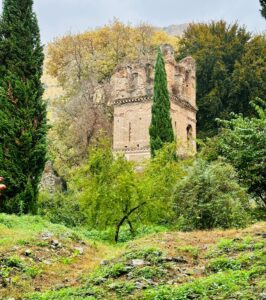
Visit the Gardens of Ninfa. In the Middle Ages, Ninfa sat along the path that linked Rome to lower Lazio, and centuries later, it became an aristocratic estate before falling to ruin. Due to its singular ecosystem, plant life flourishes, and the effect is ethereal, with bright, clear streams and flora mixed amid the ruins. In 2000, it became a Natural Monument of the Italian Republic, and in 2002, The New York Times named it the most beautiful garden in the world. Guided tours only.
Valle Marina, Terracina
Valle Marina, in Monte San Biagio, is sandwiched between the Lepini Mountains and the Tyrrhenian Sea. This small family business has been running for generations, and grandfather, Giovanni Boccia, is still pruning the vineyards. His granddaughter Marina gives guests the ultimate treat; she hosts dreamy wine tastings in their 70-year-old vineyard. Valle Marina is well-known for its Moscato di Terracina, which is only grown in the area and made by three producers. Try the Moscato di Terracina Donna Marina, which is sublime.
Visit the Riviera di Ulisse. The coast near Valle Marina is known as the Riviera di Ulisse, the “Coast of Ulysses.” The beaches of Gaeta win Blue Flags for their pristine beauty, and beach town Sperlonga has been named one of Italy’s most beautiful villages. The nymph-sorceress Circe bewitched Ulysses in the nearby Pontine Islands. The town of Nettuno was named for the Roman god of the sea, Nettuno (Neptune).
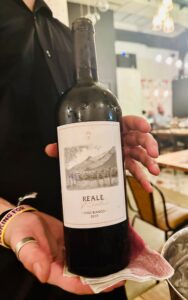
Vigne Toniche, Esperia
There are many things to love about Vigne Toniche, from its wine quality to its story of reclaimed ancient grapes. The winery is rooted in the small medieval town of Esperia, 1200 feet high on Mount Cecubo in the Aurunci mountains, just one hill away from the sea.
Siblings Stefania and Roberto Vallone are the fourth-generation stewards of the family vineyards, producing wine from two indigenous varieties found on their land that, to date, do not have a genetic link: Olivello di Esperia (Raspato Nero) and Reale di Esperia. This is an ancient land, fitting for hiding away ancient grapes. Dinosaur footprints found near Esperia date 120 to 140 million years ago.
The location above the sea provides a lush environment for agriculture; the family also grows olives, saffron, and honey on their historical piece of paradise. Stefania Vallone shared, “What distinguishes [our wine] most is the microclimate and healthiness of the air.” Try the Reale made with Reale di Esperia and the Hesperum made with the Olivello di Esperia grape.
Visit Cassino and the Abbey of Montecassino, the second oldest monastery in Italy and famous for the WWII Battle of Montecassino.
www.vinivallemarina.it
www.vignetoniche.it
www.cincinnato.it
www.jacobini.it
www.ominaromana.com

